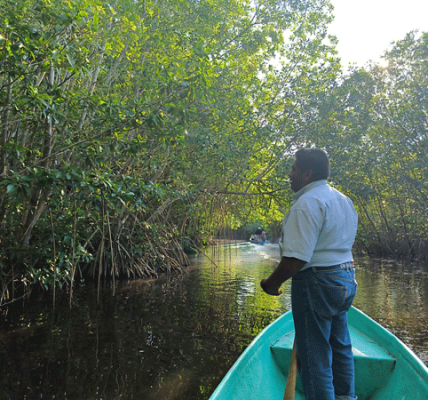Article by Enrique Lendo originally published in Reforma News
Representing the United Nations Environment Program (UNEP), this week I joined the 2023 Banking Convention in the City of Merida. This time, the Convention brought excellent news for Mexico. From now on, investment projects, debt and assets sold, traded, or promoted in Mexico as green or sustainable will have a reference framework validated by financial regulators to benchmark their impact on national sustainability goals.
Mexico’s Ministry of Finance (SHCP) released Mexico’s Sustainable Taxonomy at the Banking Convention. Green and sustainable taxonomies integrate classification criteria and schemes to assess the impact of assets, economic activities, or investment projects on the environmental or social goals of a country or jurisdiction. Well designed, taxonomies prevent misleading environmental and social claims, better known as “greenwashing”.
For the past 5 years, assets associated with environmental, social, or corporate governance criteria (ESG) have grown exponentially. The collective assets under management represented by UN Principles for Responsible Investment (IPR) signatories increased by 20% between 2019 and 2020, to reach US$103.4 trillion, close to 1/3 of total global assets. Bloomberg argues that in 2022, debt in clean energy, worth $530 billion dollars, surpassed fossil fuel debt for the first time in history. Mexico’s Stock Exchange (BMV) increased its emission of bonds labeled as green and sustainable (ESG) 40% in the past 3 years.
But how do we make sure that these investments or debt instruments turn into projects with credible environmental and social impacts? For many years, most reference frameworks, certification schemes, and ratings to benchmark green and sustainable assets were voluntary. However, in 2020 governments from a number of countries and jurisdictions, starting with the European Union, flagged their intentions to introduce regulations and criteria to define ESG assets through taxonomies; as well as to compel companies and financial institutions to disclose environmental and social risks from their operations and business models.
Today, 15 countries around the world have green and sustainable taxonomies in the process of implementation and the other 15 are developing their own taxonomies. Mexico started to design its taxonomy in 2021 and it is considered innovative and unique because it is the first one to integrate environmental and social objectives.
The government of Mexico developed its taxonomy in the framework of the Sustainable Finance Committee chaired by the SHCP and with the participation of all financial regulators, as well as associations from private financial industries. The goal of Mexico’s Sustainable Taxonomy is to promote investment in economic activities which contribute to bridging the gender and socio-economic gaps, as well as to preserve the environment in the agriculture, energy, construction, manufacturing, transport, and waste sectors. It takes the objectives of the Paris Agreement on climate change and the Agenda’s 2030 SDG as a benchmark.
UNEP, in Coordination with experts and other international organizations, supported the SHCP in the integration of Mexico´s Sustainable Taxonomy. A few days ago, Tesla decided to build the world´s largest electric vehicle plant in Santa Catarina, Nuevo Leon. No doubt, these are excellent news for Mexico. But from now on, with the Sustainable Taxonomy, Mexico has a benchmark to validate that Tesla´s and other companies’ assets and investments are sustainable in accordance with Mexico´s own goals and criteria.




